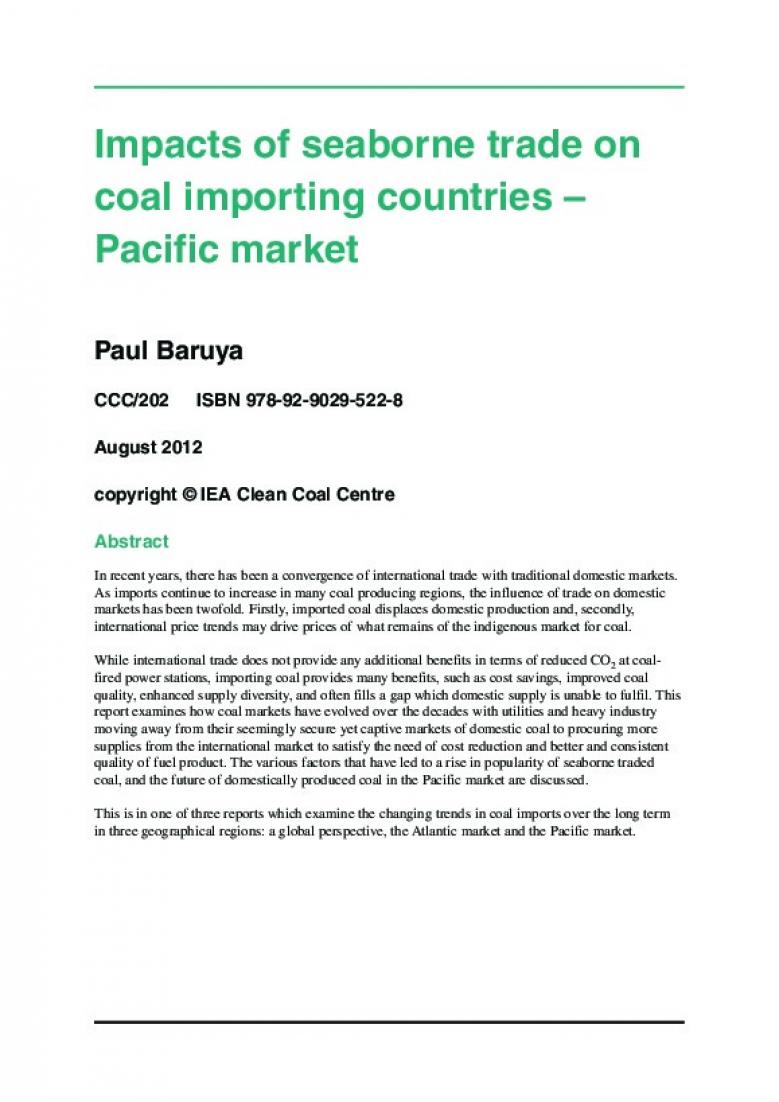CCC/202 ISBN 978-92-9029-522-8
August 2012
copyright © IEA Clean Coal Centre
Abstract
In recent years, there has been a convergence of international trade with traditional domestic markets.
As imports continue to increase in many coal producing regions, the influence of trade on domestic
markets has been twofold. Firstly, imported coal displaces domestic production and, secondly,
international price trends may drive prices of what remains of the indigenous market for coal.
While international trade does not provide any additional benefits in terms of reduced CO2 at coalfired
power stations, importing coal provides many benefits, such as cost savings, improved coal
quality, enhanced supply diversity, and often fills a gap which domestic supply is unable to fulfil. This
report examines how coal markets have evolved over the decades with utilities and heavy industry
moving away from their seemingly secure yet captive markets of domestic coal to procuring more
supplies from the international market to satisfy the need of cost reduction and better and consistent
quality of fuel product. The various factors that have led to a rise in popularity of seaborne traded
coal, and the future of domestically produced coal in the Pacific market are discussed.
This is in one of three reports which examine the changing trends in coal imports over the long term
in three geographical regions: a global perspective, the Atlantic market and the Pacific market.
| Attachment | Size |
|---|---|
| 901.15 KB |


